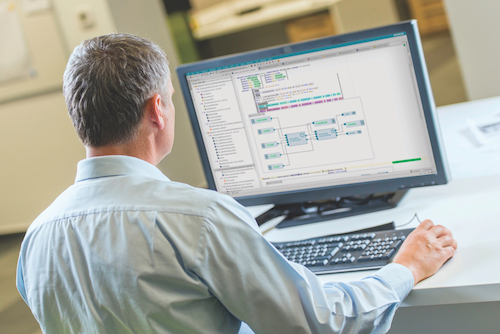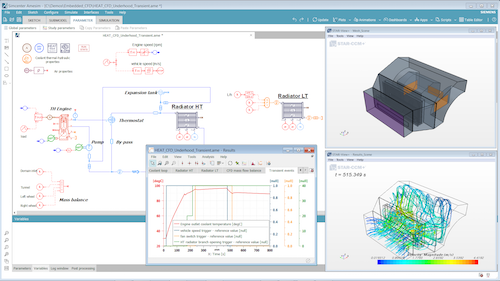Siemens Bolsters its System Simulation Story

As part of the Siemens Simcenter portfolio, Amesim advances a systems-driven approach to product development. Image Courtesy of Siemens PLM Software
Latest News
February 1, 2018
Siemens is upgrading the capabilities of its Simcenter Amesim system simulation platform while making the technology more accessible as part of an effort to promote a systems-driven approach to product development in light of increasing product complexity.
From aircraft to cars, modern-day products are sporting a broader mix of components, including an increasing dependence on embedded systems and software. The ability to perform 1D mechantronic system simulation early on in the design cycle and continuously throughout the process is a must-have capability in order to ensure quality and performance, notes Willy Bakkers, vice president and head of simulation for Siemens PLM, Simulation & Test Solutions.
 As part of the Siemens Simcenter portfolio, Simcenter Amesim advances a systems-driven approach to product development. Image Courtesy of Siemens PLM Software.
As part of the Siemens Simcenter portfolio, Simcenter Amesim advances a systems-driven approach to product development. Image Courtesy of Siemens PLM Software.“The development of today’s advanced products is very complex and if you take a traditional approach where you [simulate] every function separately, you can encounter issues much too late in the development process or when the customer uses the product,” he explains. “With mechatronics system simulation, you can simulate software, electronics, mechanical, and thermal functions together early on in design to validate what you’re doing and make sure the resulting product quality is OK.”
Simcenter Amesim hails from Siemens’ acquisition of LMS and the LMS Imagine.Lab Amesim product. The latest version of the 1D mechatronic system simulation platform introduces a range of new technology functions wrapped in an improved user experience, industry-specific capabilities for streamlined problem solving, and features for integrating the tool set into overall design processes, Bakkers says.
The newest Simcenter Amesim platform is also designed with open architecture, including support for the functional mockup interface (FMI), Modelica language, and integrations with major CAE, CAD, and controls software packages, including other Siemens Simcenter and Teamcenter modules. The open architecture is designed to extend the digital thread and allow users to integrate a wider range of 3D data for system modeling and simulation.
 Amesim introduces a range of new technology functions wrapped in an improved user experience along with industry-specific capabilities. Image Courtesy of Siemens PLM Software.
Amesim introduces a range of new technology functions wrapped in an improved user experience along with industry-specific capabilities. Image Courtesy of Siemens PLM Software.In addition to a redesigned user interface, which improves ergonomics and productivity, Simcenter Amesim also includes applications focused on industry-specific challenges to further simplify use. For example, for the automotive industry, the latest release includes enhanced capabilities for driving emissions estimation, valve train and lubrication system modeling, and under-hood heat exchanger pre-sizing to help address design challenges related to fuel economy and pollutant emission reduction. For the aerospace industry, there are capabilities for aircraft electrification and propulsive and fuel systems design, along with other capabilities focused on the industrial machinery sector.
“The bundling of apps for specific verticals helps make sure the software isn’t just accessible for Ph.D.s, but also for architects and system simulation engineers,” says Bakkers, adding that these capabilities help democratize the system modeling technology.
Later this year, Siemens will make the Simcenter Webapp Server available, a capability which will help extend the use of system simulation at the enterprise level. Leveraging this technology, pre-defined system models can be parameterized and accessed via the web, enabling design teams to extend the mechatronics system simulation engineering workflow across the broader enterprise.
Watch this video to learn the basics of Simcenter Amesim and system simulation modeling.
Subscribe to our FREE magazine, FREE email newsletters or both!
Latest News
About the Author
Beth Stackpole is a contributing editor to Digital Engineering. Send e-mail about this article to [email protected].
Follow DE





